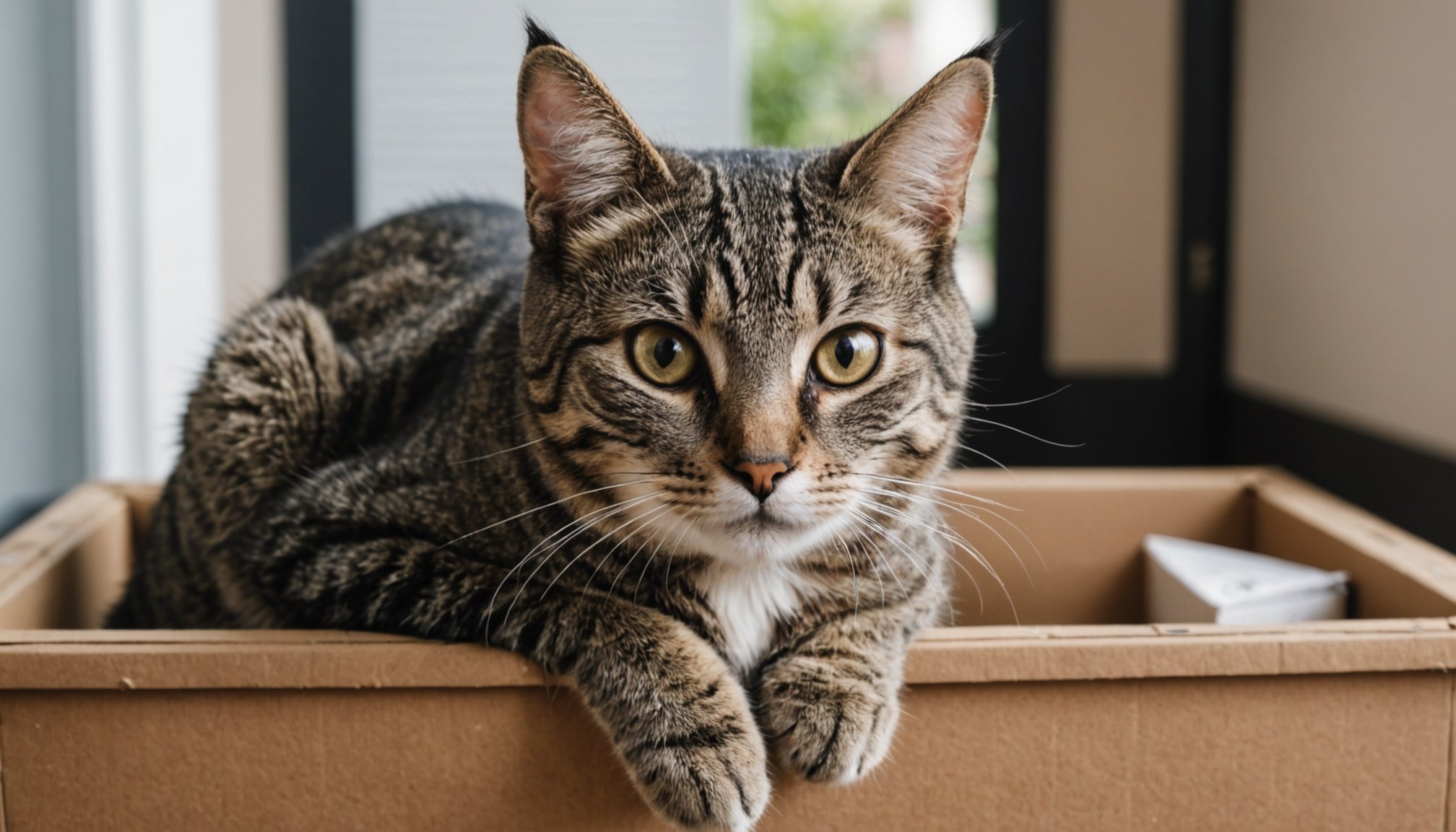Understanding Your Cat’s Needs in a New Climate
Navigating changes in cat behavior due to climate change requires attention to several factors. Recognizing signs of stress is crucial, as discomfort may manifest through increased hiding, vocalization, or even aggression. Cats are highly sensitive to shifts in temperature, humidity, and other weather changes, which can seriously impact their well-being.
Climate adaptation is an ongoing process, demanding close observation of your cat’s responses to new climatic conditions. Keeping an eye on their behavior can indicate whether they’re adjusting well or if intervention is necessary. Key factors affecting their comfort include room temperature and access to suitable sleeping areas shielded from extreme conditions.
Have you seen this : Ultimate grooming guide for devon rex cats: protecting their unique coat with expert care
To better assess your cat’s needs, start by observing their daily routines and preferences. Notice how they interact with the environment during this transition. Are they spending more time near cool or warm spots? Are they drinking more water than usual? These insights will guide you in adapting their habitat to provide optimal comfort.
By addressing these needs, you establish a balanced home atmosphere, helping your feline friend thrive in any climate. Foster an environment that ensures their comfort and reduces stress during periods of climatic adjustments.
Also to discover : How can I maintain my cat’s coat health during seasonal shedding periods?
Preparing Your Home for Your Cat’s Comfort
Establishing a pet-friendly environment is key to easing your cat’s transition into a new climate. The foundation of such a space is effective climate control. Regulating indoor temperature keeps it consistent, reducing stress associated with extreme fluctuations. Ensuring your home has well-insulated spaces, air conditioning, or heaters, helps maintain a comfortable environment for your cat.
Creating cozy spaces is another crucial aspect. Cats often seek out warm and secure areas. Offering a variety of bedding options encourages them to find their ideal spot. Consider placing soft, warm blankets in favoured sleeping areas to provide additional comfort. Strategic positioning of beds or hiding spots in quieter parts of the home helps minimize environmental stressors.
Moreover, easy access to fresh water and balanced nutrition is essential during climate transitions. Hydration is particularly vital in warmer conditions. Ensuring clean, readily available water supports health and helps regulate body temperature. Select appropriate food options that align with any specific dietary needs they may develop due to the climate shift.
Implementing these climate control and cozy spaces strategies effectively supports your cat’s adaptation to their new environment.
Gradual Acclimatization Techniques
Gradual exposure is key in helping your cat adapt to a new climate smoothly. Begin by introducing your cat to new outdoor conditions in short, controlled sessions. This reduces overwhelm and allows your pet to progressively get accustomed to changes in temperature, humidity, and surrounding noises. Monitoring their reactions during these managed outings can provide insights into their comfort levels.
A robust approach to environmental acclimatization involves establishing a consistent daily routine. Routines offer predictability, reducing stress during this adjustment period. Feeding, playtime, and rest should occur at similar times each day, reassuring your feline of structure amidst change. Consistent interaction and engagement can help your cat feel secure, fostering a smoother transition.
During extreme weather conditions, consider keeping your cat indoors initially. This protective strategy can prevent them from experiencing sudden environmental stressors that could harm their well-being. In the meantime, indoor activities can keep them stimulated. Use interactive toys and scratching posts to provide mental and physical enrichment, ensuring they remain active and engaged despite the outdoor restrictions. This gradual acclimatization, combined with routine establishment, supports a healthier adjustment for your cat in a new climate.
Monitoring Health and Behavior
It is crucial to prioritize veterinary check-ups to ensure your cat’s health isn’t adversely affected by climate change. Regular visits help identify potential health issues early and provide a preventive approach against climate-induced ailments. Cats are adept at masking discomfort, making professional assessments invaluable.
Understanding and recognizing behavioral changes can be indicative of stress or discomfort. An increase in hiding, vocalizations, or a shift in social interaction are common behavioral cues needing attention. These signs can alert you to needing interventions to aid your cat’s adaptation to their evolving environment.
Pay close attention to your cat’s eating and drinking habits, as they are reliable indicators of well-being. Changes such as reduced appetite or increased water consumption may signal underlying stress or health issues related to climatic changes. Tracking these habits provides a comprehensive view of your cat’s health during transitions.
Monitoring these health aspects is pivotal for ensuring your cat’s comfort and safety in changing climates. With meticulous observation and regular veterinarian support, you can help your feline companion maintain optimal well-being amidst environmental changes.
Climate-Specific Considerations
Adapting care routines to align with seasonal climate changes is vital for ensuring your cat’s well-being. Different climates present unique challenges, which necessitate tailored climate adaptation strategies. For instance, hot climates demand vigilant hydration and cooling measures. Meanwhile, colder climates require cozy, insulated sleeping spots to maintain warmth.
Understanding common health risks associated with different climates equips you to pre-emptively protect your cat. In warmer environments, heatstroke and dehydration are prevalent concerns. These risks necessitate strategic cooling options like shaded rest areas and efficient climate control systems. In contrast, cold climates might expose cats to respiratory issues and frostbite, making warm clothing and indoor safety paramount.
Providing enrichment activities that align with the new environment can also aid adaptation. Indoor games and sensory stimulation keep cats engaged when outdoor conditions are harsh. For example, interactive toys and play sessions mirror outdoor activities, promoting both mental and physical health.
By adjusting routines based on seasonal changes, you effectively cater to your cat’s comfort and health, ensuring they thrive in their acclimatization journey. Emphasizing specific care tips enhances your cat’s resilience to climate-induced stresses.
Resources and Products to Support Transition
Transitioning your cat to a new climate can be smoother with the right pet products and resources. These tools aid in climate adaptation, making the process more comfortable for your feline friend. High-quality products like heated beds or cooling mats adjust to different temperatures, offering a practical solution to help your pet adapt and relax.
Utilize climate adaptation resources that offer guidance tailored to your cat’s specific needs. These may include online articles, forums, or community support networks that provide advice from experienced pet owners and professionals. Such resources are invaluable in addressing unique concerns related to climate exposure.
Helpful tools in the form of interactive toys or enrichment activities keep your cat engaged during transitions. Toys stimulating your cat’s mind and body can alleviate stress and boredom while promoting well-being. Ensure these tools suit the climate conditions your cat is experiencing, such as toys that provide entertainment indoors during harsh weather.
Reach out to local pet groups for community support, which can offer firsthand insights and shared experiences. Additionally, reputable online forums can provide companionship and advice, fostering a supportive network to ease your cat’s integration into new environmental conditions.











